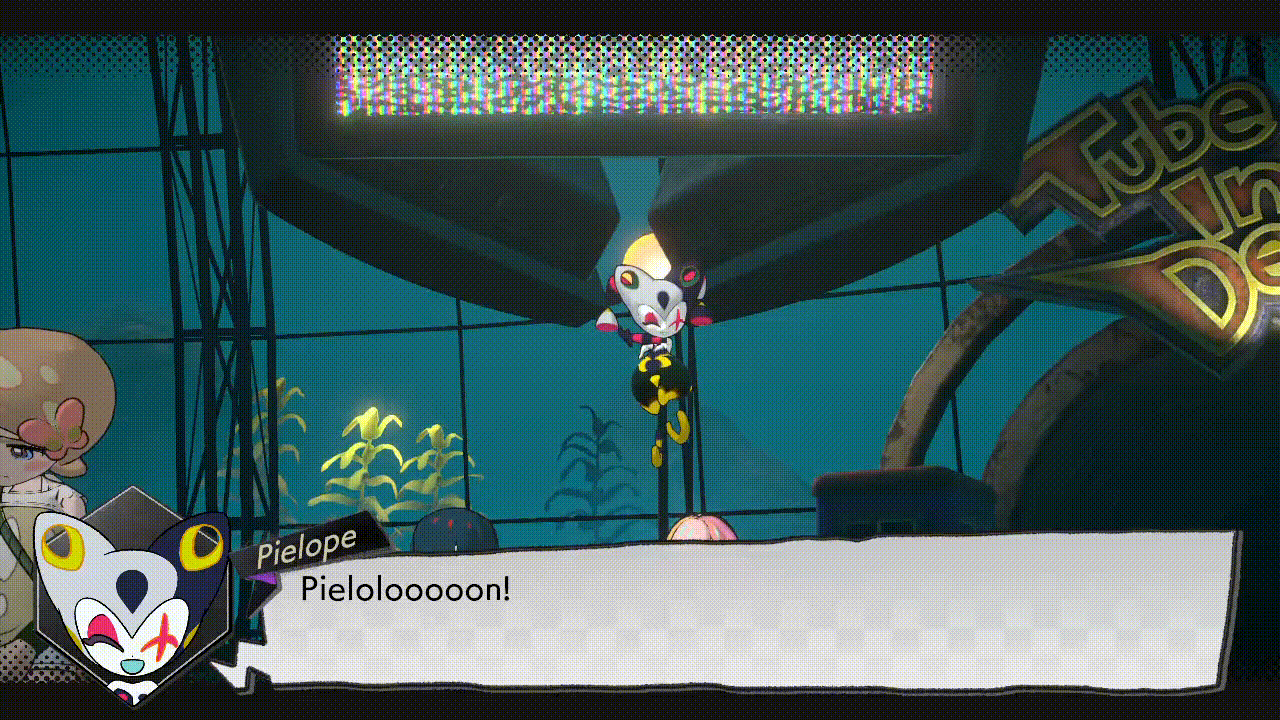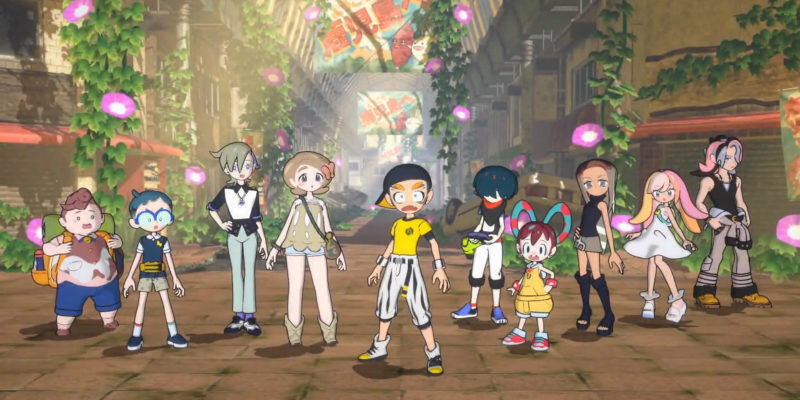Review | World's End Club - 12 Friends at the End of The World
Back in 2017, a group of Spike Chunsoft employees left to form their own company, Too Kyo Games. Among its founding members were Kazutaka Kodaka and Kotaro Uchikoshi, the respective creators of the Danganronpa and Zero Escape series. Given the similarities between both their series, it’s honestly surprising that it took until 2020 for the two to actually work on a project together. Released last year as an early access Apple Arcade title, World’s End Club is the two’s first proper collaboration, with Uchikoshi as director and writer and Kodaka as creative director.
The full game was recently released on the Nintendo Switch and expectations were certainly high for it. Danganronpa and Zero Escape are well-known and beloved by their fans for their complex mysteries, larger than life characters, and off-the-wall humour, so many assumed that World’s End Club would follow in their footsteps. And while in some ways it does, it is a very different beast compared to anything in either series.
Yep, that is one megalomaniacal mechanical anime baddie.
The game is set in 1995 as a group of schoolkids called the Go-Getters Club are on a field trip, only for a meteor to crash into a nearby city, with the impact crashing the bus they’re in. When the group awake, they find themselves trapped in an underwater theme park and at the mercy of a mechanical, monochromatic mascot called Monoku- I mean, Pielope. The robot tells them they must play the “Game of Fate” and whoever wins will be allowed to escape.
[Very mild spoilers ahead]
This sounds exactly like the kind of set-up seen in the Danganronpa and Zero Escape games, especially as the kids quickly turn on one another to save their own hides. But, while this is something of a spoiler, the Game of Fate is not the main focus of the game itself. It’s basically the prologue (the January Nintendo Direct gave this ‘twist’ away already with a lot of the trailer most definitely above sea level). After managing to escape the park and return to the surface the real story can begin. This involves the kids embarking on a cross-country trip back home to Tokyo. But the world appears to be completely devoid of human beings and bizarre monsters now stalk the land. Throughout their journey, the kids begin to awaken to unique superpowers as they slowly unravel what exactly happened while they were unconscious. The early game twist is admittedly a rather humorous subversion of expectations, and it’s understandable that Kodaka and Uchikoshi would want to move on from their usual death trap game stories. However the game still bears some of their usual hallmarks, and in all World’s End Club’s story feels rather lacking when compared to what came before it.
Story is certainly a lot more simplistic when compared to Danganronpa’s murder mysteries and Zero Escape’s timey-wimey shenanigans. This doesn’t mean World’s End Club is predictable, but it lacks the sort of interconnected complexity fans may be expecting, especially when it comes to the characters themselves.
Unlike the various casts of the Danganronpa games, what you see is what you get with the Go-Getters Club. Kansai is your typical hot-blooded wannabe leader type, Pai is the soft and gentle mother figure, Aniki is the gruff loner with a hidden heart of gold. They all fit the usual archetypes but are not developed with much subversion on their respective tropes. Each character does show new sides of their personality as the plot progresses, but they remain easy to summarise and hardly break the mould. And with there being twelve kids, only a small handful of them get any meaningful character development. The cast is plenty likeable, however. And considering how the Danganronpa games go, it’s actually kind of refreshing having a gang of kids who aren’t constantly on the cusp of murdering one another. While there are disagreements and occasional rifts, the group very much remain friends from beginning to end. You’re bound to come away really liking at least one of them (I found myself personally loving silent protagonist Reycho). It is also worth noting the cast lacks the sort of controversial figures seen in Danganronpa, like the nasty bully character Hiyoko or the infamous Nagito.
Gangs all here and they’re… affable, I guess…
Some of the end-game twists had me cackling like a madman for how delightfully wild they are and there is some occasional fantastically subtle foreshadowing that you could easily miss. But between the cutesy art-style of the characters, the simpler story and personalities, and the general tone of the game, it almost feels like this is aimed at a much younger audience. Even at its darkest, World’s End Club never reaches the same bloody levels Danganronpa and Zero Escape could sometimes go to. At the same time, though, some of the themes and concepts the game posits may fly over younger players’ heads. Arguably sticking the game in an unfortunate limbo where it’s too adult for kids but too kiddy for adults. But hey, that doesn’t matter if the gameplay is good, right?
Unfortunately, this is the part of the review where, if I was talking to you, I’d awkwardly suck air through my teeth as I explain why the gameplay of World’s End Club’s is easily its weakest aspect. Instead of a visual novel/puzzle game that fans of these creators might expect, World’s End Club is a 2D side-scrolling platformer, and it’s not a very good one.
I’d love to say something nice about this part of the game but, er, yeah……….
Every level has you run to the right with the occasional platforming challenge or puzzle to solve. And it’s all so barebones. I would criticise the rather awkward jumping but the platforming itself never approaches anything remotely difficult so its poor feel never even becomes relevant. The puzzles are hardly taxing either. We’re talking “push a block onto a button” or “push a block to reach a higher platform”. Each of the kids has their own different power that can be used with a simple button push (Chuko can breathe fire, Jennu can flip gravity to walk on ceilings, Mowchan can turn metal and roll like a ball etc.), but the game never requires you to combine them in unique ways. Instead, each problem has a very obvious single solution that corresponds to one character. You only control characters one at a time and, if you need to switch to another, the game insists on playing a short cutscene. In fact, the game loves to frequently interrupt what you’re doing with cutscenes. Sometimes, a cutscene will play when the characters react to a new enemy or obstacle in their path, then, once you bypass it easily, another cutscene triggers, killing the flow. Even the few boss fights on offer are far simpler than you may think. And while everything does kill you in one hit, the game’s checkpoint system is rather generous. Although it’s still relatively easy, sometimes you will find yourself dying over and over during very specific moments, making the game over sound effect become annoying in a very different, unintentional, way than it is meant to.
The story was clearly the priority for World’s End Club, with most of the game dedicated to the characters talking rather than the platforming. This means if you’re not on board with the story or the characters, you’ll be left with a very shallow experience. There are some moments where you get to make a choice to determine the flow of the story, just like Zero Escape, but it’s as complex as the rest of the game is.
The future is bright for Too Kyo Games. Just maybe not with this IP as in its current form.
World’s End Club is an incredibly mediocre platformer wrapped up in a story that’ll probably only appeal to those who are already die-hard fans of Kodaka and Uchikoshi’s work. It’s certainly not awful and I’m sure it’s already got a devoted fanbase who love it, warts and all. But I can’t see this spinning off into its own series and, considering the pedigree of the people who made it, I expected a lot more. I certainly would not recommend this as someone’s first experience with either Kodaka or Uchikoshi’s work.
Fortunately, their previous games are widely accessible across multiple platforms. All three Zero Escape games can be downloaded on PC and PlayStation 4, and the standalone AI: The Somnium Files from Spike Chunsoft is available on PC, PS4, and Nintendo Switch (which is getting a sequel next spring). As for Danganronpa, all three mainline titles are also on PC and PS4, but you can also wait for the Nintendo Switch collection that was recently announced for later this year.
It’d be very easy to just demand Kodaka and Uchikoshi stick to what they know best and pump out another Battle Royale or Saw-inspired visual novel, but it’s clear they want to explore other genres and try different things. That’s great as they clearly have a lot of ideas they want to get out, but hopefully, their next collaboration has a lot more meat on its bones.






![Here's a Rundown of Everything at Sony's State of Play [08/07/2021]](https://images.squarespace-cdn.com/content/v1/5caf2dea93a63238c9069ba4/1626040538297-BHR6TJEH6HOTL5177I8K/State+of+play+June+2021+0.jpg)



